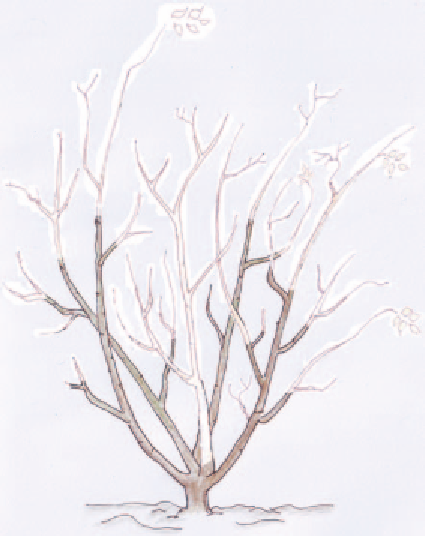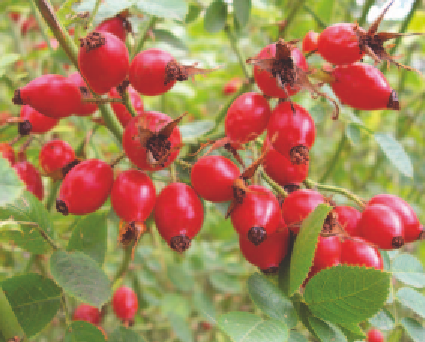Agriculture Reference
In-Depth Information
By removing dead flowers in summer, the
subsequent hips will also disappear.
Rejuvenate your bush as you see fit by
adopting the same method outlined in
Figure 4.33.
When pruning these kinds of roses, keep
in mind the character of the rose you are
dealing with. They have their own wild
romantic charm. If you want 'neat', plant
carpet roses and hybrid teas.
Repeat-floweringroses
These are the roses most of us encounter and
they are also divided into a few pruning
groups. Generally speaking, hard pruning
produces bigger flowers but also less shrub.
Unless you are growing roses for the local
horticultural show, your rose is also a
member of its landscape group as a shrub or
a climber. It should be considered as a plant
in its own right, not just as a few sticks
supporting huge flowers.
Figure 4.33
After removing dead, weak or crossed wood
reinvigorate once flowering roses by removing a third to a
quarter of the oldest stems. Shorten back long stems and
side growths by a third.
These roses can be pruned to flower at a
certain time. If you have a special event in the
growing season where you want the roses to
be at their best, lightly prune the newer
growth by about a quarter, six to eight weeks
before the event. This is not a guarantee of
bloom as it depends upon climatic conditions;
water and nutrients can be supplied, but
warm sunny weather cannot be relied upon.
Large-flowered roses
This group includes the hybrid perpetuals
and hybrid teas. They are characterised by
their large flowers and generally vigorous and
upright growing habit. The hybrid tea is what
Figure 4.34
Many once-flowering roses have ornamental
hips; do not deadhead them as you will be removing the
autumn display.

















